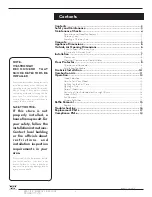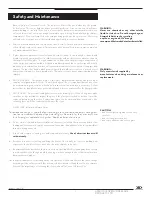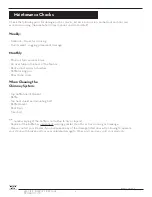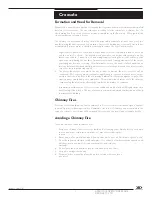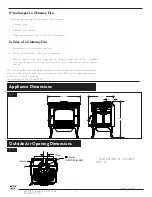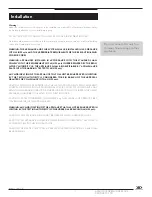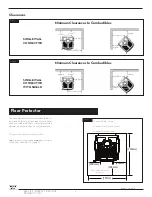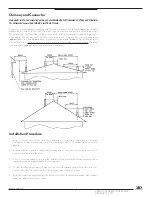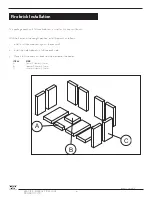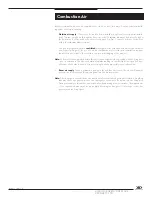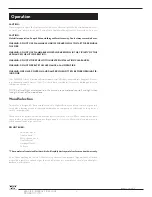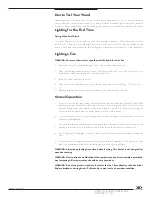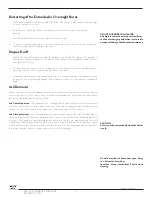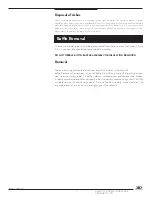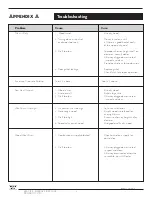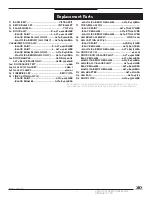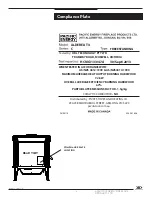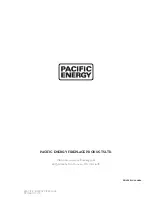
©PACIFIC ENERGY FIREPLACE
PRODUCTS LTD.
5
010515-20 ALT4
Creosote
Formation and Need for Removal
When wood is burned slowly, it produces tar and other organic vapours, which combine with expelled
moisture to form creosote. The creosote vapours condense in the relatively cool chimney flue of a
slow burning fire. As a result, creosote residue accumulates on the flue lining. When ignited, this
creosote makes an extremely hot fire.
The chimney connector and chimney should be inspected periodically (at least once every two
months) during the heating season to determine if a creosote buildup has occurred. If creosote has
accumulated (3 mm. or more), it should be removed to reduce the risk of a chimney fire.
1. Highest smoke densities occur when a large amount of wood is added to a bed of hot coals
and the air inlet is closed. The heated wood generates smoke, but without ample air, the
smoke cannot burn. Smoke-free, clean burning requires leaving the air inlet relatively wide
open, especially during the first 10 to 30 minutes after each loading, when most of the smoke
generating reactions are occurring. After 30 minutes or once the wood is fully charred, the air
inlet can be turned down substantially without excessive smoke generation. Wood coals create
very little creosote-producing smoke.
2. The cooler the surface over which the wood smoke is passing, the more creosote will be
condensed. Wet or green wood contributes significantly to creosote formation as the excess
moisture that is boiled off cools the fire, making it difficult for the tars and gases to ignite, thus
creating dense smoke and poor combustion. This moisture-laden smoke cools the chimney,
compounding the problem by offering the smoke the ideal place to condense.
In summary, a certain amount of creosote is inevitable and must be lived with. Regular inspection
and cleaning is the solution. The use of dry, seasoned wood and ample combustion air will help
to minimize the buildup.
Chimney Fires
Excessive creosote build-up can cause a chimney fire. Creosote comes from tar and organic vapours
released from a slow burning wood fire. Flammable creosote will condense and accumulate in the
lining of a relatively cool chimney. When ignited, this creosote can result in an extremely hot fire.
Avoiding a Chimney Fire
There are two ways to avoid chimney fires:
1. Keep your chimney clear of creosote build-up by cleaning your chimney before each burn
season, and as necessary (accumulations of 3 mm or more) during the
season.
2. Burn clean, well-seasoned wood only (seasoned at least one year). Avoid wet or green wood.
3. Do not burn household trash, cardboard, plastics, construction lumber, treated or beach wood
(salt from beach wood will corrode your fireplace and void your
warranty).
4. Do not leave the air inlet wide-open for extended periods of time.
5. Keep a fire extinguisher handy.
6. Prepare a home evacuation plan with a place outside where everyone
is to meet.


